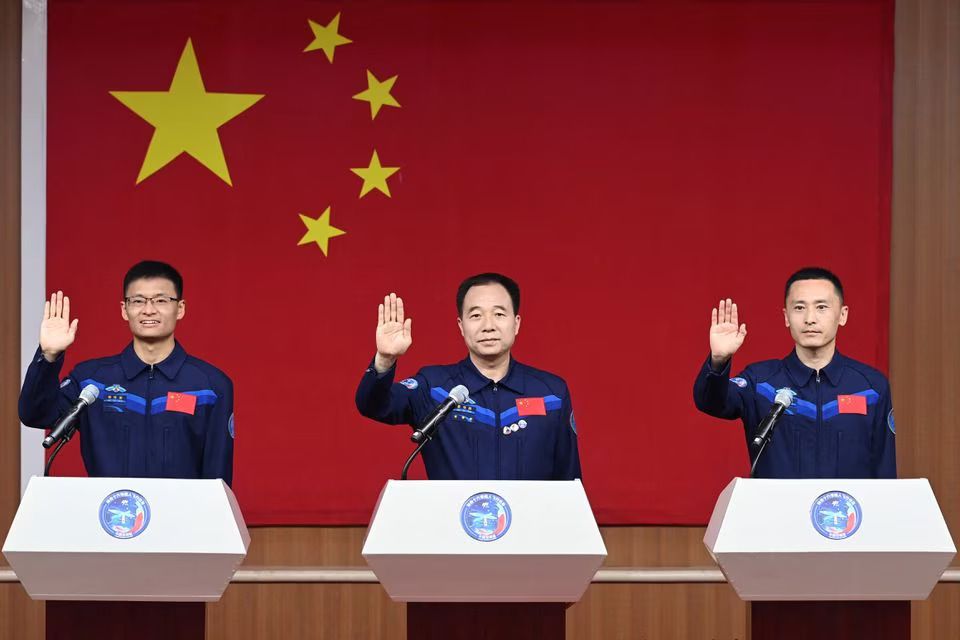Tiangong station Shenzhou-16 crew comes back to Earth
In May, China launched the Shenzhou-16 mission, which involved sending three taikonauts (Chinese astronauts) to the Tiangong space station.

A few minutes every morning is all you need.
Stay up to date on the world's Headlines and Human Stories. It's fun, it's factual, it's fluff-free.
The backstory: The International Space Station (ISS) is a joint project between several countries, with space agencies around the world contributing to this giant orbital satellite that’s home to several astronauts at a time. It’s been continually crewed since 2000. Astronauts there conduct experiments and maintain the spacecraft.
China never had a big part in the ISS, but it was basically barred from the ISS program entirely over a decade ago – mostly because of rifts between China and the US, which was worried about the Chinese space programs' links to its military. Eventually, the Chinese Manned Space Agency (CMSA) decided to build its own space station, the Tiangong (translating to “Heavenly Place”), mostly over the course of 2021 and 2022. It’s smaller than the ISS, hosting three modules (the ISS has 16).
More recently: In May, China launched the Shenzhou-16 mission, which involved sending three taikonauts (Chinese astronauts) to the Tiangong space station. Aboard the mission were commander Jing Haipeng, spaceflight engineer Zhu Yangzhu and payload specialist Gui Haichao. Haichao was the first Chinese civilian taikonaut in space.
Over the past five months, the three conducted a bunch of scientific experiments and public outreach. They successfully grew tomatoes, lettuce and green onions aboard the station. Zhu and Jing also successfully conducted a whopping eight-hour spacewalk to get some upkeep done on the station’s cameras.
The development: Last week, a new three-person crew (the youngest crew on the station yet) arrived at the space station to replace the Shenzhou-16 crew, who began prepping to return home. On Tuesday, the three taikonauts landed back safely on Earth. The Shenzhou spacecraft set down at the Dongfeng Landing Site in the Gobi Desert. They all appeared healthy.
At this point, the Tiangong station is pretty much done being constructed and equipped, so the focus for future missions will continue to be experiments and making sure everything continues to run smoothly. As China aims to get its taikonauts on the moon by 2030, send a new telescope probe into the universe and land spacecraft on an asteroid, the world’s eyes are on its future space missions as they continue to unfold.
Key comments:
"On-site medical supervision and insurance personnel confirmed that the astronauts are in good health," Chinese state media, CCTV, said. "The Shenzhou-16 crewed flight mission was a complete success."
"This vegetable cultivation apparatus is a key part of the whole Environmental Control and Life Support System [ECLSS], and it is used in space to verify the relevant technologies. In the future, we will focus on rapid and large-scale cultivation," Yang Renze, a researcher from China Astronaut Research and Training Center, told CCTV. “The system can be applied to the field of deep space exploration, including our crewed lunar and Mars landing missions.”




Comments ()